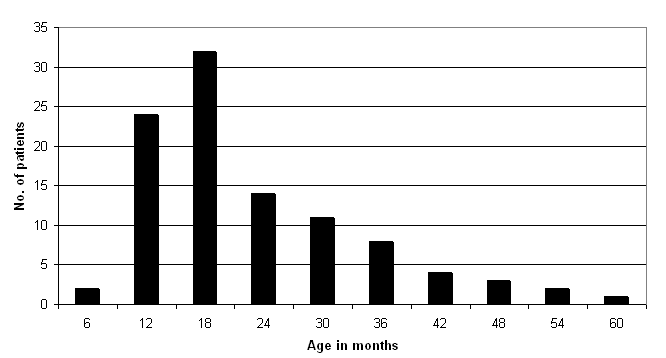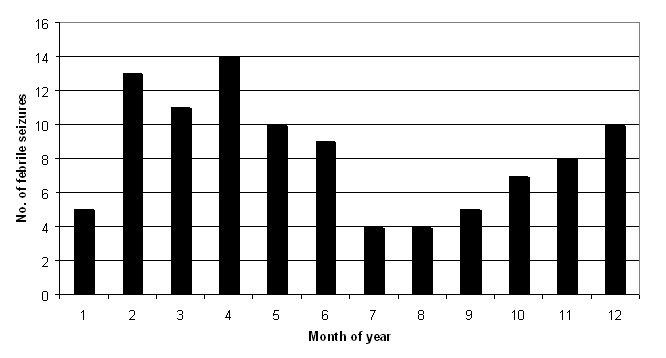Epidemiology
Febrile seizures are common in childhood. The cumulative incidence is estimated to be between 2% and 5% in the US and Western Europe, between 6% and 9% in Japan, and 14% in India and Guam.[4] In Asia, the most common cause is influenza A, especially prevalent in epidemics.[10][11][Figure caption and citation for the preceding image starts]: Age of occurrence of febrile seizures in 100 consecutive children treated in a university-affiliated tertiary care hospital: maximum frequency between ages 12 and 18 months, with a rapid decline after 24 months of ageGraph created by John J. Millichap, MD; used with permission [Citation ends].
Most population-based studies report a sex ratio of 1.6 boys to 1 girl.[7][12] The wide geographic distribution of case reports in the literature suggests children of all races are affected. A socioeconomic factor has not been demonstrated.
Genetic susceptibility, young age, immaturity of the central nervous system, and environmental factors are important as they are modifiers of the threshold convulsive temperature. Autosomal-dominant, -recessive, and polygenic modes of inheritance have been described and several genetic loci identified.
Seasonal, circadian, geographic, electrolyte, and nutritional variables (i.e., iron and zinc deficiency) also have roles in susceptibility.[11][13][Figure caption and citation for the preceding image starts]: Seasonal occurrence of febrile seizures in 100 consecutive children treated in a university-affiliated tertiary care hospital: maximum frequency in spring and winter; lowest frequency in summer monthsGraph created by John J. Millichap, MD; used with permission [Citation ends].
Use of this content is subject to our disclaimer